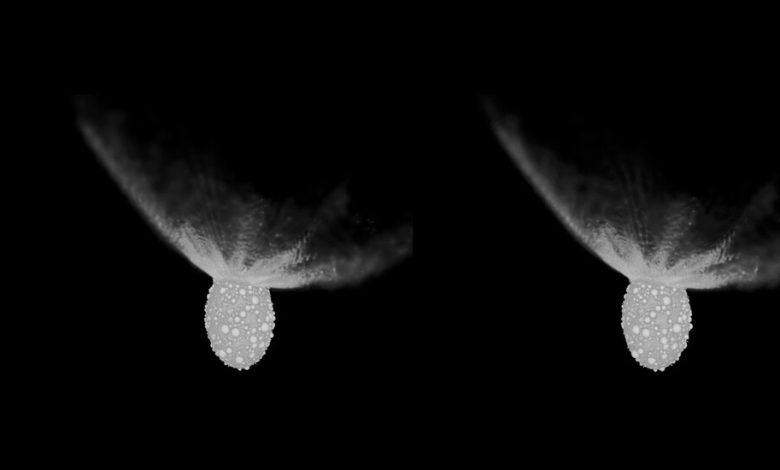NASA’s Crash Into an Asteroid May Have Altered Its Shape

In 2022, when NASA’s $325 million spacecraft crashed into an asteroid named Dimorphos at 14,000 miles per hour, cheers and applause erupted back on Earth.
NASA’s Double Asteroid Redirection Test (DART) mission deliberately targeted Dimorphos to change its orbit around the larger asteroid Didymos as a dress rehearsal of sorts for thwarting a deadly space rock that might someday head toward Earth.
The world’s first-ever planetary defense experiment was deemed a triumph: The asteroid’s orbit shrank by 33 minutes, far above the minimum threshold of 73 seconds.
But what the DART team didn’t realize then was just how bizarrely Dimorphos responded to that punch. A new study, published on Monday in Nature Astronomy, has concluded that DART hit Dimorphos so hard that the asteroid changed shape.
Simulations of the impact suggest that the spacecraft’s death did not excavate a normal, bowl-shaped crater. Instead, it left behind something that resembles a dent. And although the artificial impact blasted millions of tons of rock into space, plenty splashed back onto its sides like tremendous tidal waves. It widened Dimorphos, transforming it from a squat orb into a flat-topped oval — like an M&M candy.
That the asteroid acted like a fluid comes down to its peculiar composition. It’s not a solid contiguous rock, but more like “a pile of sand,” said Sabina Raducan, a planetary scientist at the University of Bern in Switzerland and the study’s lead author. And a low-density asteroid barely held together by its own gravity was never going to respond in a straightforward manner when a van-size spacecraft flew into its face.




